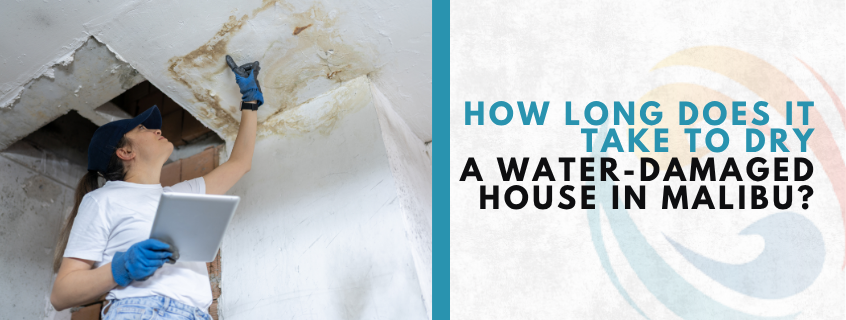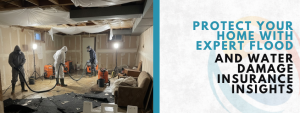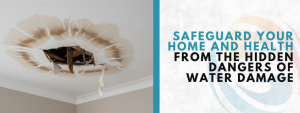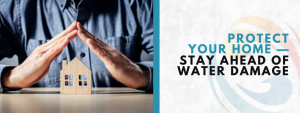
Living in Malibu is like living in a dream—sunshine, ocean views, and fresh breezes. But even in paradise, unexpected problems can strike. One of the biggest nightmares for any homeowner? Water damage. Whether it’s from a burst pipe, a roof leak, or coastal storms, water damage can quickly turn your peaceful space into a mess. One of the first questions people ask is: How long does it take to dry out water damage?
The answer isn’t simple, but don’t worry—we’re going to walk you through everything you need to know. By the end of this blog, you’ll understand how long it usually takes, what steps are involved, and how to make sure it’s done right the first time.
When you’re dealing with a water emergency, every hour counts. It’s not just about drying things out—it’s about preventing mold, protecting your home, and saving money. And if you’re in Malibu, you know that acting fast is the key to getting back to your beautiful coastal lifestyle.
The First 24 Hours: Why Speed Matters More Than You Think
Imagine spilling a big glass of water on your carpet. If you clean it up right away, no problem. But leave it for a day, and things get smelly fast. The same goes for a water-damaged home.
When trying to dry out water damage, time is critical in the first 24 hours. Water seeps into drywall, flooring, and even behind walls. If you wait too long, moisture can cause wood to swell, paint to peel, and mold to grow.
Here’s what usually happens in those first 24 hours:
- Water saturates floors and baseboards.
- Drywall starts soaking in moisture.
- Musty odors begin forming.
- Mold spores may activate, especially in Malibu’s mild climate.
At this stage, professional equipment like industrial fans and dehumidifiers are needed. If you try to do it yourself, it might seem dry on the surface, but the moisture underneath can stick around for days or even weeks. And that leads to long-term damage.
Pro Tip: Acting fast can make the difference between a small cleanup and a full-blown mold remediation project.
Want expert help within hours? Check out emergency response services here.
Factors That Affect How Long It Takes to Dry Out Water Damage
Every home is different, and so is every water damage case. That’s why drying times can vary. But there are some key things that affect how long it really takes to dry out water damage.
A few major factors include:
- Type of materials: Hardwood floors absorb water differently than carpet. Drywall dries faster than insulation.
- Amount of water: A small pipe leak isn’t the same as a flooded bathroom.
- Ventilation: Good airflow speeds up drying. Humid Malibu air can slow it down.
- Weather conditions: Rainy or humid days make it harder to get rid of moisture.
- Professional help: Using experts with the right tools makes drying faster and more complete.
Here’s a quick reference table:
| Factor | Effect on Drying Time |
| Porous materials (carpet, wood) | Slower drying |
| Drywall and painted surfaces | Moderate drying |
| Cement and tile floors | Faster drying |
| Humid coastal air in Malibu | Slows down drying |
| Use of industrial fans & dehumidifiers | Speeds up drying |
So, how long does it take? In most cases, drying out water damage can take 3 to 5 days, but for major damage, it might take up to 10 days. And remember, rushing the process can backfire—leftover moisture can return later as mold or rot.
Signs That Your Home Isn’t Dry Yet (Even If It Looks Like It)
Have you ever walked into a room and noticed that damp, musty smell? That’s a big red flag. Just because your floor feels dry doesn’t mean the deeper layers are moisture-free.
When you’re dealing with efforts to dry out water damage, here are some signs your house isn’t fully dry yet:
- A damp or musty smell that lingers
- Warped or swollen wood floors
- Paint or wallpaper that’s bubbling or peeling
- Doors that suddenly don’t close properly
- Cold spots on walls (which can mean hidden moisture)
And here’s one you may not think of: higher energy bills. If your HVAC system is constantly running to battle hidden moisture, you’ll feel it in your wallet.
Using moisture meters or thermal cameras can help professionals detect what the naked eye can’t see. That’s why hiring a restoration expert is often the safest route.
Need someone who can detect hidden moisture fast? Explore professional restoration services here.
What Happens If You Don’t Fully Dry Out Water Damage?
Let’s say you mop up the water, air the room for a few days, and move on. What could go wrong?
When you don’t completely dry out water damage, your home becomes a perfect hiding spot for trouble. Here’s what might show up:
- Mold: This grows in damp, dark spaces—under floors, behind walls, inside closets.
- Wood Rot: Wet wood breaks down over time, which weakens your home’s structure.
- Pest problems: Bugs love moisture, especially termites and cockroaches.
- Air quality issues: Mold spores and mildew can make allergies and asthma worse.
- Insurance nightmares: If the damage wasn’t professionally repaired, claims may get denied.
Here’s a helpful list of common long-term problems caused by leftover moisture:
- Hidden mold growth
- Warped flooring
- Stained ceilings and walls
- Weak or damaged support beams
- Rust on metal appliances or fixtures
- Electrical issues behind walls
So, when in doubt, don’t guess. Let professionals handle it properly to make sure every inch is bone dry.
Tools Experts Use to Dry Out Water Damage Faster
Drying out your home isn’t just about opening windows and turning on fans. Restoration professionals use high-powered tools that work way faster and more effectively than household equipment.
Here’s a look at some of the most important tools used:
Description List of Drying Tools:
- Air Movers: These heavy-duty fans push air across surfaces to speed up evaporation.
- Dehumidifiers: Pull moisture out of the air to reduce humidity levels quickly.
- Moisture Meters: Detect water levels inside walls, floors, and ceilings.
- Thermal Imaging Cameras: Spot wet areas you can’t see with your eyes.
- Injectable Systems: Special tools that blow air into wall cavities and under floors.
- HEPA Air Scrubbers: Clean the air while drying out the moisture to improve breathing conditions.
Using these tools in the right order—and for the right amount of time—makes all the difference. If you rely on DIY methods, you may miss the hidden spots that end up costing you more later.
Professionals have years of experience and follow a proven process. If you’re looking to get it done right the first time, find Malibu’s top water damage team here.
How to Speed Up the Drying Process at Home (Without Making Mistakes)
While professionals are your best bet for large-scale damage, there are a few things you can do at home to help speed up the process, especially while you wait for help to arrive.
Here’s a safe and effective checklist:
- Shut off the water to stop the leak if possible.
- Unplug electronics and remove anything that could be dangerous.
- Open windows and doors to let air move freely through your home.
- Use portable fans and dehumidifiers if you have them.
- Lift furniture off the ground to keep it away from wet flooring.
- Remove rugs and curtains to prevent staining and mildew.
- Check behind furniture for hidden moisture.
Just remember, don’t rip up flooring or tear down drywall unless you really know what you’re doing. Disturbing wet materials can release mold spores or even expose electrical hazards.
For best results, treat your efforts as a temporary fix until the pros arrive.
Malibu’s Unique Weather Can Affect Drying Time
Malibu’s ocean breeze and sunshine may seem perfect for drying out a house. But coastal weather also means high humidity, and that slows down the drying process.
Malibu homes are often built with stylish wood, stone, or natural finishes. These materials can be sensitive to water and require special handling to prevent damage.
Here’s how Malibu’s climate impacts drying efforts:
- High humidity: Slows evaporation and makes it harder for surfaces to dry.
- Cool coastal nights can bring moisture back into materials overnight.
- Salt air: Increases the risk of corrosion on metal surfaces.
To overcome these challenges, restoration experts in Malibu often use climate control systems. These machines regulate the temperature and humidity indoors to create perfect drying conditions—even when the weather outside doesn’t cooperate.
So, while Malibu’s beauty is unmatched, its climate can make water damage more complicated than it seems.
How to Know When It’s Safe to Move Back In
After a water emergency, everyone wants to get back to normal. But moving back too soon can be risky.
Here’s how to know your house is truly safe:
- All visible moisture is gone.
- Moisture readings show safe levels inside walls and floors.
- No musty smells linger in the air.
- Mold tests come back clean.
- Repairs have been made to any damaged drywall, flooring, or electrical work.
Some people assume that once everything “feels” dry, it’s fine. But real safety comes from using tools that measure what we can’t see.
Checklist Before Moving Back In:
- Moisture tested by professionals
- Mold inspection complete
- Repairs verified by a licensed contractor
- Air quality test passed
- Insurance claim approved (if applicable)
Patience during this stage protects your health and your home. Don’t rush it.
Drying out water damage isn’t just about getting back to comfort—it’s about protecting your investment, your family, and your peace of mind. Whether it takes a few days or a full week, the key is doing it thoroughly and safely.If you’re in Malibu and need help fast, trust the team that locals rely on for professional, caring service. Don’t leave anything to chance—visit this trusted restoration provider today.
Frequently Asked Questions About Drying Out Water Damage in Malibu
How long will it take to dry out water damage in my Malibu home?
Drying out water damage typically takes 3 to 5 days, depending on the severity of the damage, weather conditions, and materials affected. In more serious cases, it may take up to 10 days. Using professional equipment and services can significantly speed up the process and ensure your home is fully dry.
Can I dry out the water damage myself, or do I need to hire a professional?
For small spills, you may be able to dry things out yourself with fans and ventilation. But if the water has soaked into floors, walls, or ceilings—or if it’s been sitting for more than a few hours—it’s best to call professionals. They use moisture meters, dehumidifiers, and drying systems to prevent mold and structural damage.
How do I know if everything is really dry and safe again?
Even if it looks dry, moisture can remain deep in walls or under floors. Signs that it’s truly dry include: no musty odors, normal humidity levels, no warping or discoloration, and verified moisture readings from professional tools. It’s safest to have a restoration expert confirm dryness before moving forward with repairs or reoccupying the space.
What should I do immediately after discovering water damage?
Act fast:
Turn off the water source if possible.
Unplug electronics and avoid wet areas.
Ventilate the space by opening windows and using fans.
Call a professional restoration company right away to begin the drying process.
Quick action helps reduce damage, prevent mold, and lower repair costs.
Will my insurance cover the cost to dry out water damage?
It depends on your policy and the cause of the damage. Most homeowners’ insurance covers sudden incidents like burst pipes, but may not cover gradual leaks or flooding without extra coverage. Always document the damage with photos and contact your insurance provider immediately to start the claims process.






